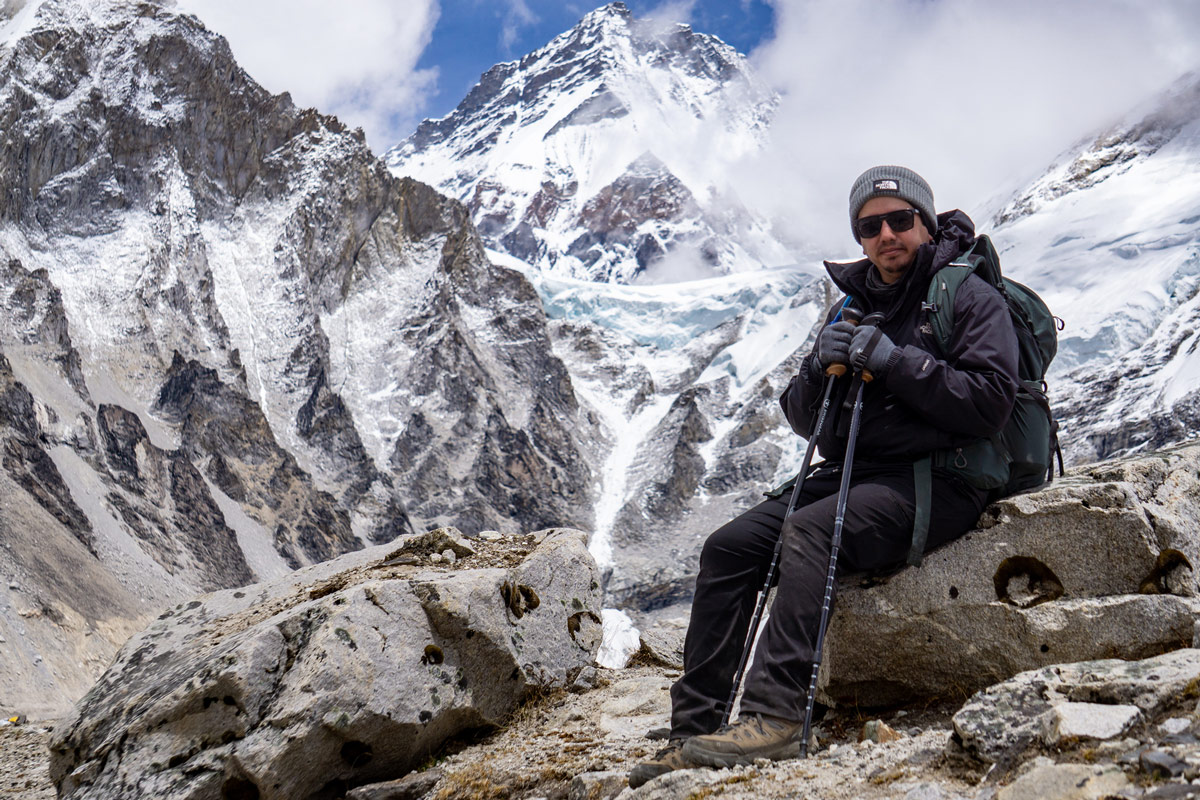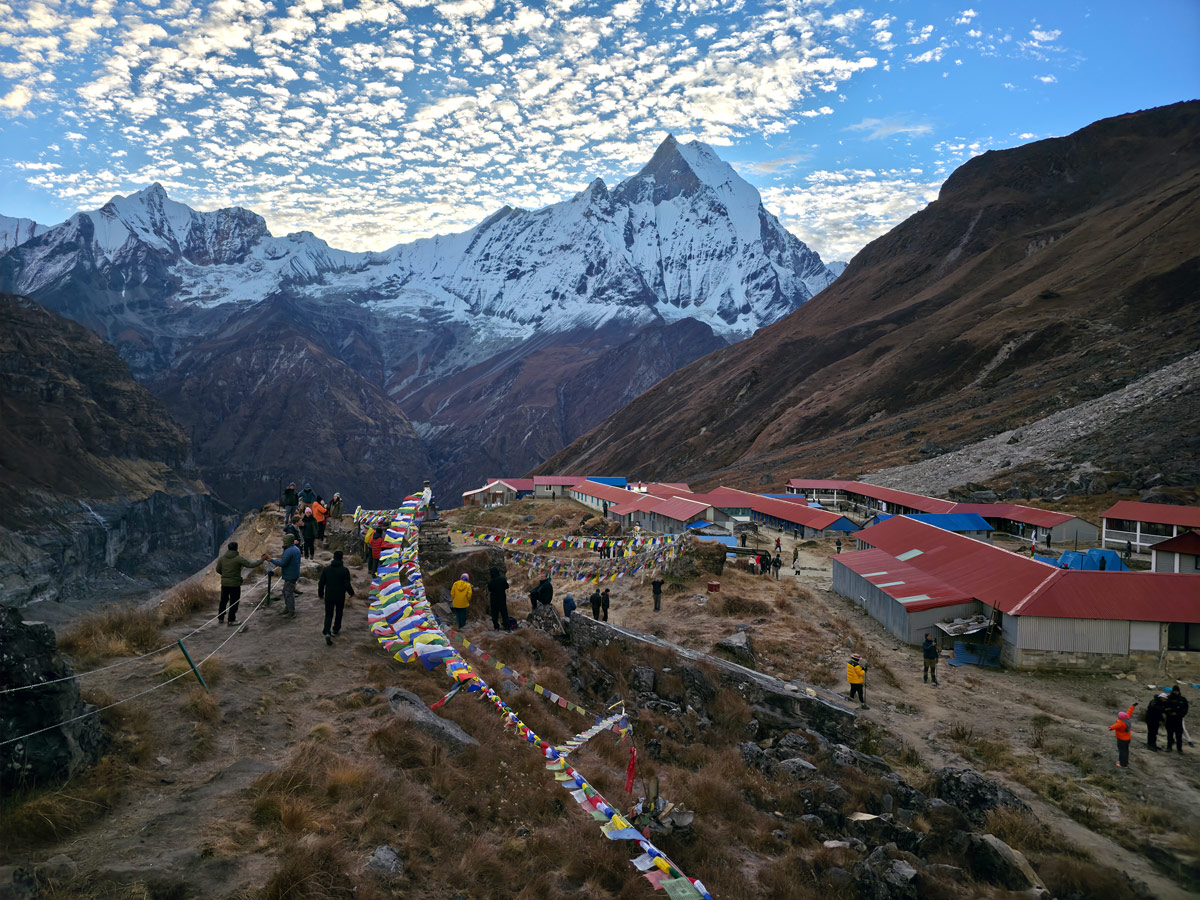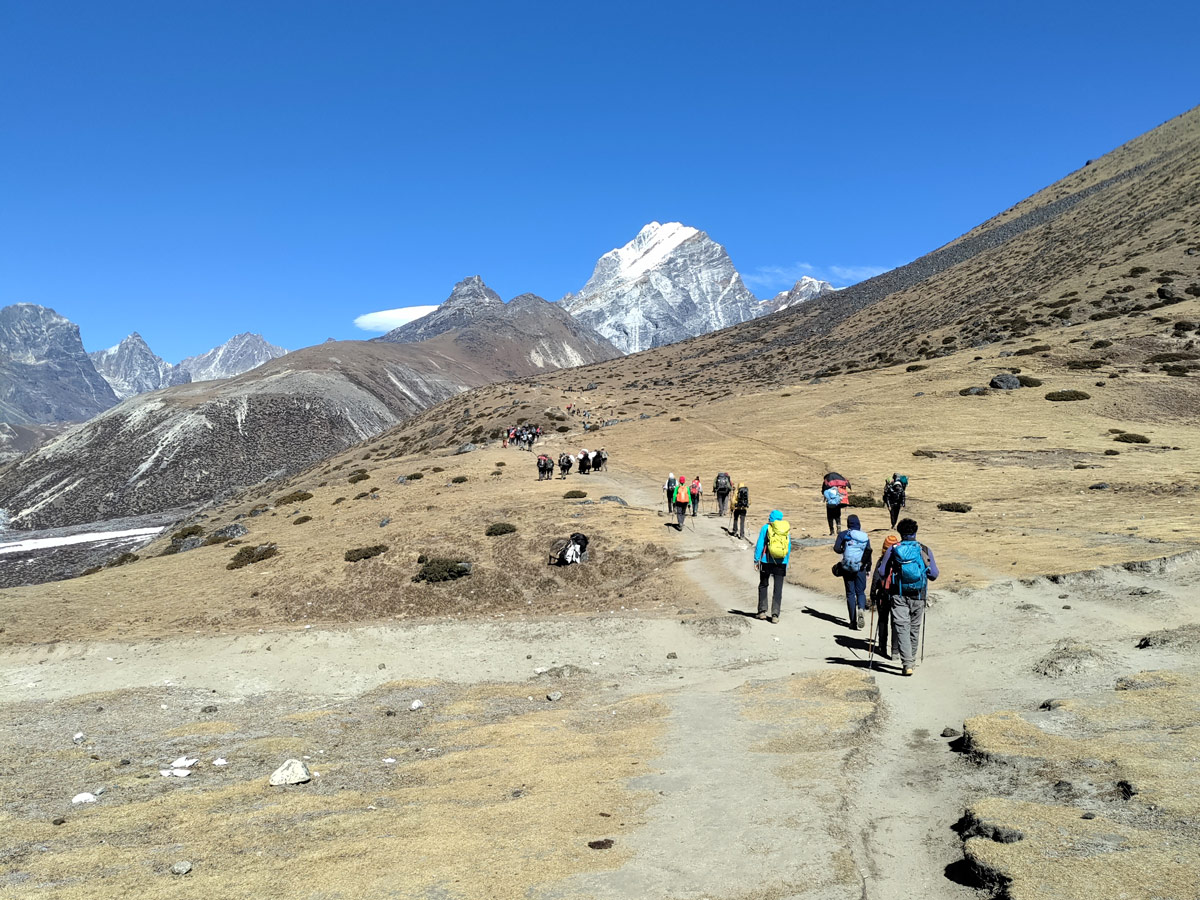Nepal is famous in the trekking world with its name resonating as the dreamland for trekkers. And all the trekking enthusiasts must have come across the fascinating trekking trails of Nepal during their exploration.
However, the towering peaks and rugged trekking trails might look intimidating at the first glance. And it might leave you with the wrong idea that it can only be tackled by experienced and seasoned trekkers.
Trekking in Nepal opens up a world where the magic of these high altitude mountains is accessible to everyone due to the growing awareness towards inclusive tourism which has led to accessible trekking in Nepal gaining momentum.
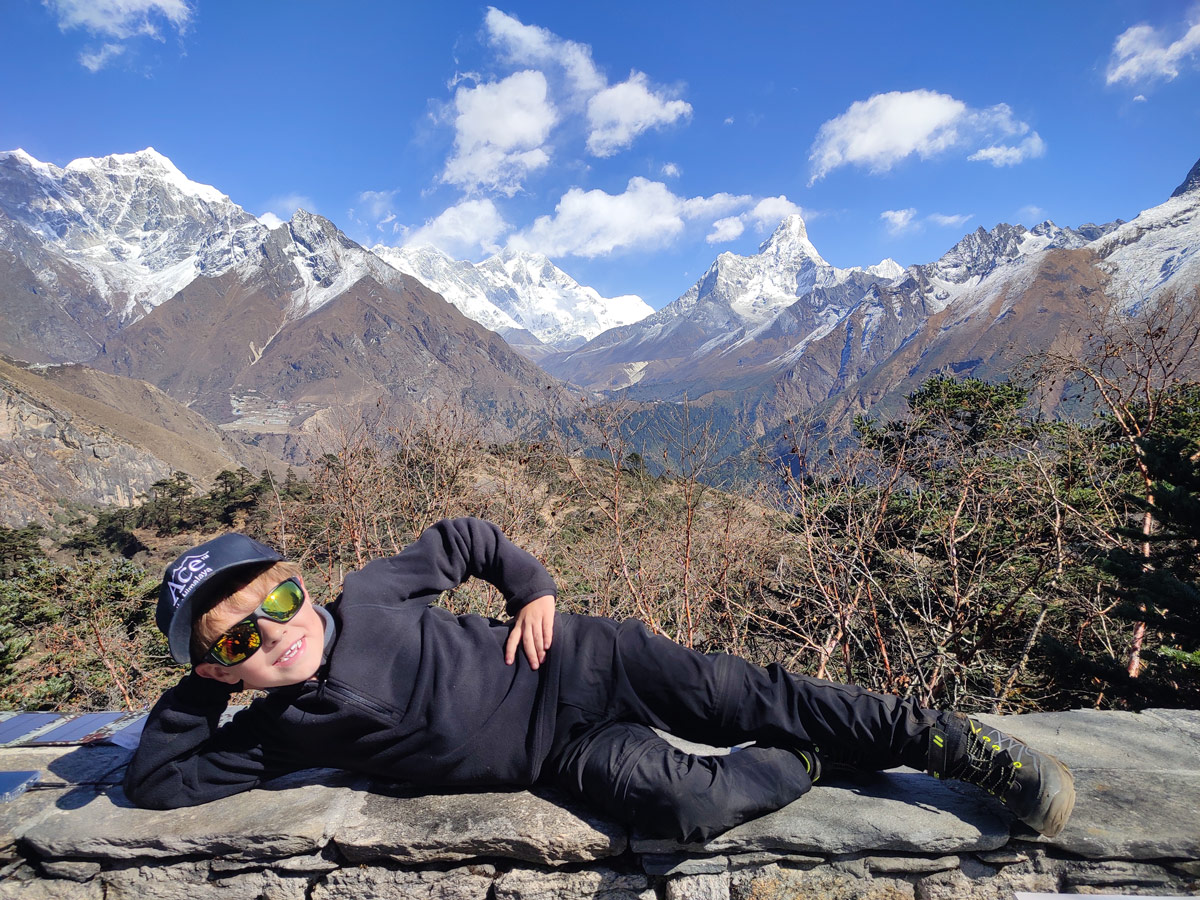
Whether you’re an elderly traveler, someone with limited mobility, a family with children, or simply not someone who is ultra fit and prefer less physically demanding adventures, Nepal offers trekking experiences tailored for you.
Therefore, in this blog, we will delve into the how and what of accessible trekking in Nepal including its meaning, importance, as well as some accessible trekking routes in Nepal and practical tips to plan an accessible Himalayan adventure.
Decoding Accessible Trekking
First and foremost, let’s start with understanding what exactly is accessible trekking. In the most basic sense, it means creating an inclusive environment for all sorts of trekkers regardless of their diverse needs which are catered to during the trek.
This means physical assistance for people with mobility issues, and highly descriptive guides who paint vivid pictures of the landscape, clear communication strategies, potentially guides with basic sign language skills for people with sensory impairment.
For individuals with cognitive disabilities and older adventurers, the treks are designed with simpler itineraries, and patient, understanding support staff who can adapt to individual pacing and needs.
If you are trekker with chronic illnesses, fatigue syndromes, or anxiety, accessible trekking will include options for shorter days, medical support, and a deep understanding from guides to ensure comfort and well-being.
Why Accessibility in Trekking Matters?
For those wanting to experience the raw beauty and authentic lifestyle of Nepal, trekking is the best way to do so. And even beyond that, trekking is one of the most sought after adventurous activities.
However, trekking means going rogue and more often than not these trekking trails can be pretty challenging to conquer. This makes one of the best adventure activities limited to a certain group of people with certain physical stature.
Why have a limited participation when you can open the activity to a wider range of people? Sounds fun, doesn’t it? Well, that’s exactly where accessibility comes into the picture.
Now that you know what accessible trekking routes mean, you can think for yourself how it breaks the age-old barriers in this adventurous world and opens it up to people willing to participate in this adventure beyond their limitations.
Accessible treks make trekking possible as well as enjoyable for elderly travelers, people with limited mobility, families with young children, as well as for first-time trekkers seeking easier trail and fosters inclusive tourism.
Challenges of Accessibility in Nepal’s Terrains
While the idea of accessible trekking in Nepal sounds great, the difficult and varied terrains of Nepal make achieving this equally tough by throwing its own challenges into the process.
The reality of the landscapes in Nepal, especially along the trekking trails, looks somewhat like this:
- Steep ascents, narrow trails, and uneven surfaces
- Stone stairs in many trekking routes
- Remote locations with limited road connectivity
- Lack of fully wheelchair-friendly infrastructure
- Unpredictable weather and high-altitude risks
Having said that, there have been gradual improvements in trekking infrastructures including vehicle access which has helped to tone down these challenges and make accessibility easier.
Key Features of an Accessible Trek
The idea of accessible trekking in Nepal is not just limited to throwing a ramp somewhere on the trail or making the trail easier. It spans way beyond that. Below are some features of an accessible trek that are aimed to being achieved:
- Gentle gradients and well-maintained paths with fewer steep climbs.
- Alternative transport options like jeeps, horses, or even helicopters for specific sections.
- Accessible accommodations with features like wide entrances, ramps, and hygienic restrooms.
- Trained guides and porters good at assisting differently-abled travelers.
- Emergency evacuation preparedness, including helicopter rescue services.
- Shorter trekking durations to prevent exhaustion and altitude-related issues.
Accessible Trekking Routes in Nepal
While the trekking industry in Nepal is undergoing a revolution for good and attempting to make most of the treks inclusive, it is still a long way to go. Meanwhile, below are some treks that are great options for accessible trekking in Nepal:
Ghorepani Poonhill Trek
Probably one of the most accessible, short, and beginner friendly treks in Nepal, the Ghorepani Poonhill Trek spans across mere 3 to 5 days and takes you to the maximum altitude of 3,210 meters at Poon Hill.
Consider this to be the best introductory trek in Nepal given its low level of difficulty. You will have to trek merely for a few hours as there is vehicle access up until Ulleri on this trek.
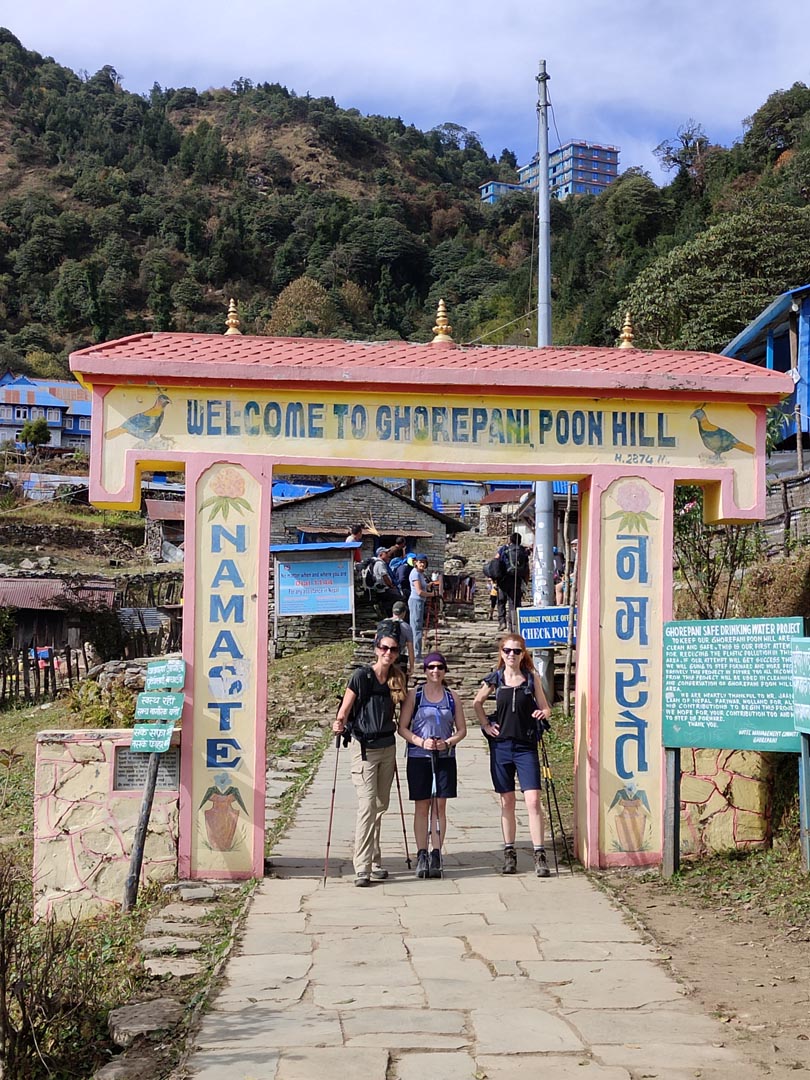
Also, while trekking, you will be crossing well trodden trails. Given the ample availability of comfortable teahouses and rest stops along the route, you can stop and rest at any given time.
The Ghorepani Poonhill trek is perfect for beginners, families with kids, elderly trekkers with moderate fitness, and travelers with time constraints as you will be able to catch the sunrise from Poon Hill with relatively little effort compared to high-altitude treks.
Everest Base Camp Trek
Spanning across 12 to 14 days, the Everest Base Camp trek is the most challenging trek on this list as it takes you upto an elevation of at least 5,364 meters at the EBC.
You might be wondering how exactly the trek is accessible. Well, though challenging, EBC can be accessible to fit seniors, first-timers, and slow-paced trekkers with extra support.
This extra support includes vehicle access till inside parts of the trek, customized itinerary, extra acclimatization days, as well as helpful and licensed trekking guide and support staff.
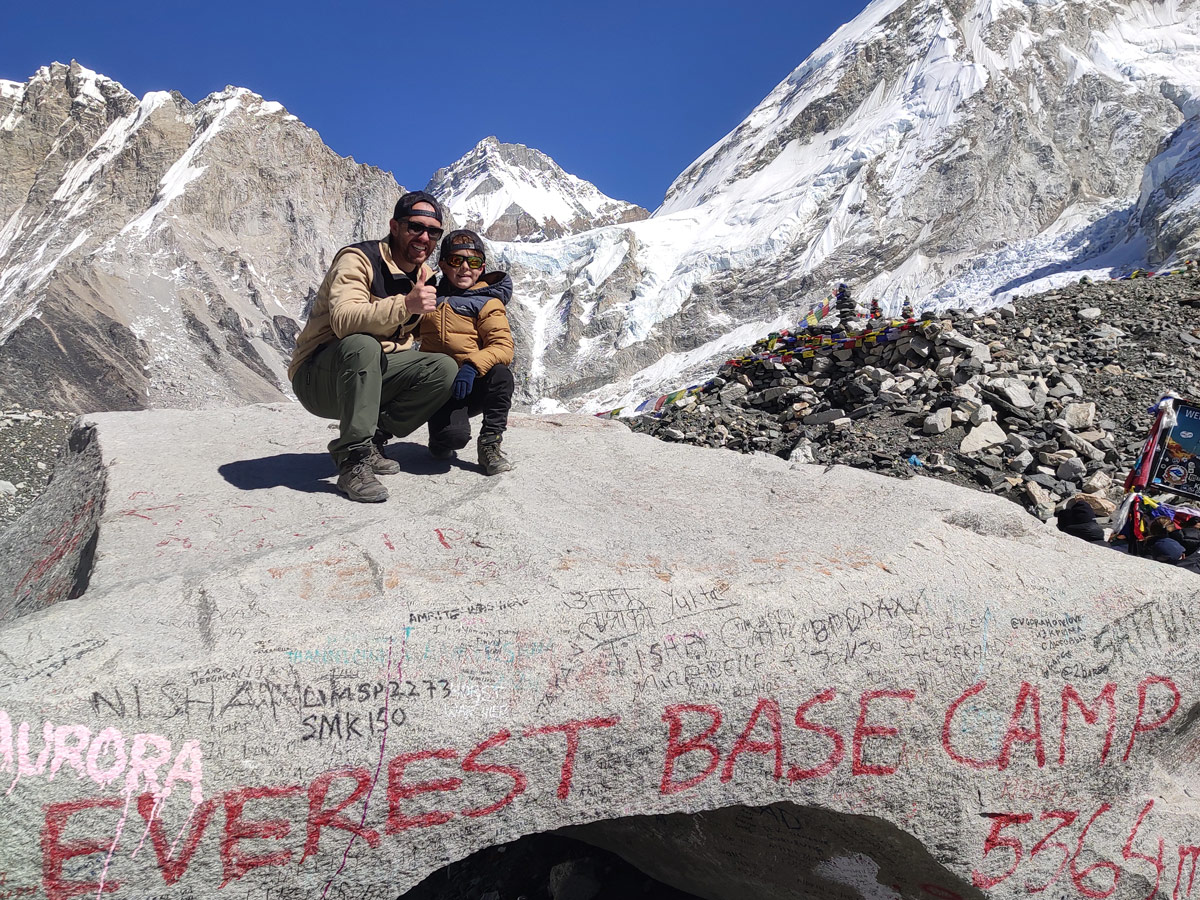

For trekkers who struggle with the descent, there are options of helicopter fly out available from Gorakshep or Pheriche which provides flexibility for those unable to manage the descent.
The well-maintained “Everest Highway” trail, with suspension bridges, stone-paved paths, and plenty of resting points, supports trekkers needing frequent breaks.
When it comes to accommodation along the EBC trek, the lodges along the EBC trail are among the most developed in Nepal, offering comfortable accommodations and amenities.
Everest View Trek
A simplified way to explore the Everest region unlike the challenging EBC trek, the Everest View Trek, as the name suggests, allows you to explore the stunning panoramas that the Everest region has to offer.
This trek takes you up to Hotel Everest View, which is the highest hotel in the world, at an altitude of 3,880 meters. This trek offers a taste of the Everest region, minus the physical demands.



Followed by moderately challenging trekking days, trekkers can enjoy spectacular views of Everest, Lhotse, Ama Dablam, and more from the Hotel Everest View.
The accessibility is higher as you have convenient options for helicopter fly-in/fly-out available, especially for people with mobility issues. On top of that, you will also get a chance to experience the luxury of this rare high altitude hotel.
Annapurna Base Camp Trek
Spanning across the duration of 10 to 12 days, the Annapurna Base Camp Trek is a popular trekking route which can be considered as an accessible one due to well maintained trails and locals being a part of the hospitality business.
Although the trek does take you to a considerable altitude of 4,130 meters, you can get customized itineraries, and the ABC trek features gradual elevation gain which makes it much easier.
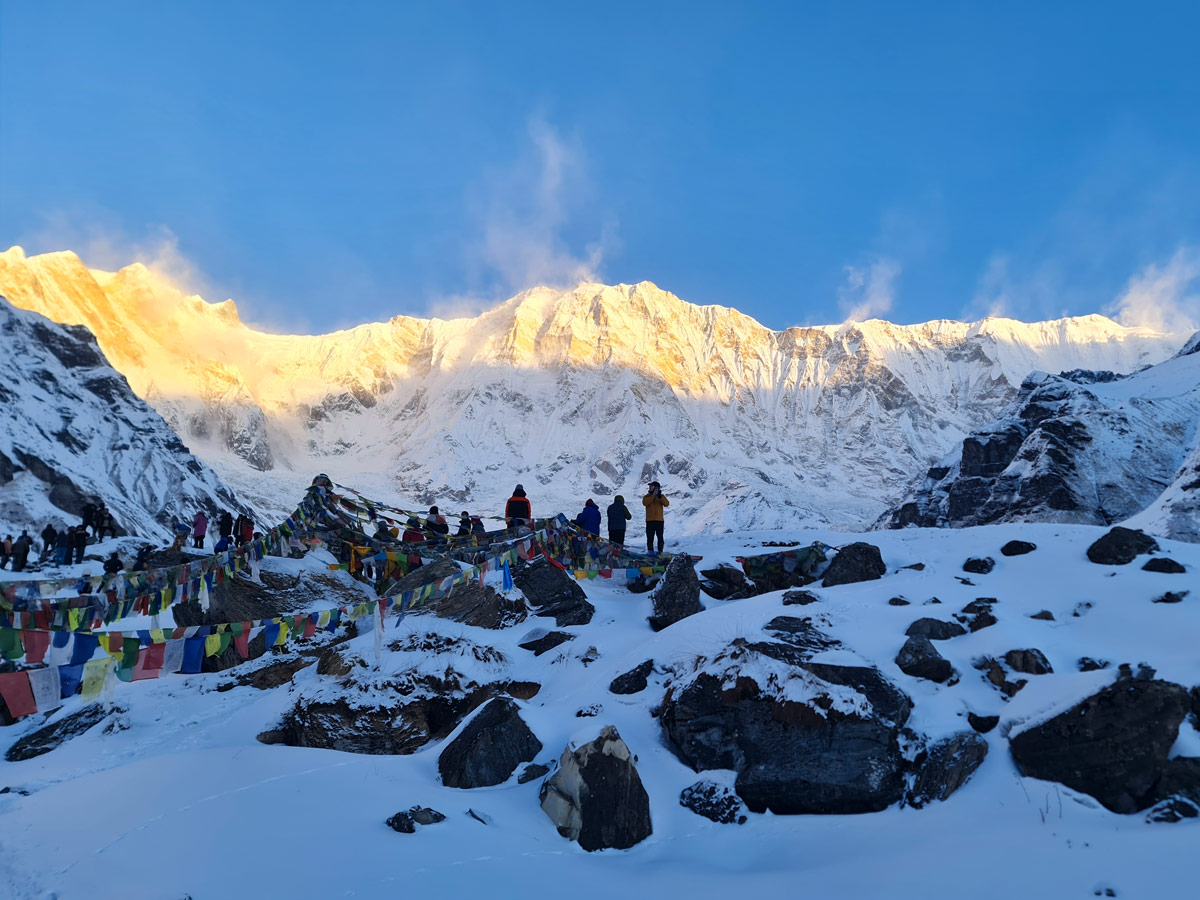

Given the well developed trails, you will also get vehicle access which is available up to the village of Ghandruk. While this is not much farther into the trek, it does reduce the initial trekking distances.
As far as accommodation is concerned, you will find well established and accessible teahouses in the Annapurna region which feature decent facilities for elderly and cautious trekkers.
You can also set your own pace on the trek and take one or more acclimatization days. For enhanced accessibility, you can take a helicopter ride from ABC back to Pokhara.
Lower Mustang Trek
Also known as the Jomsom Muktinath Trek, the Lower Mustang trek is yet another accessible option, far more compared to its challenging counterpart which is the Upper Mustang Trek.
This trek takes you to an altitude of 3,800 meters at Muktinath and spans roughly around a week. What makes this trek accessible is the flat terrains that you will come across.
Interestingly, the Annapurna Circuit Trek also passes through this region after crossing Thorong La Pass and then follows the Kali Gandaki Valley toward Ghorepani Poon Hil
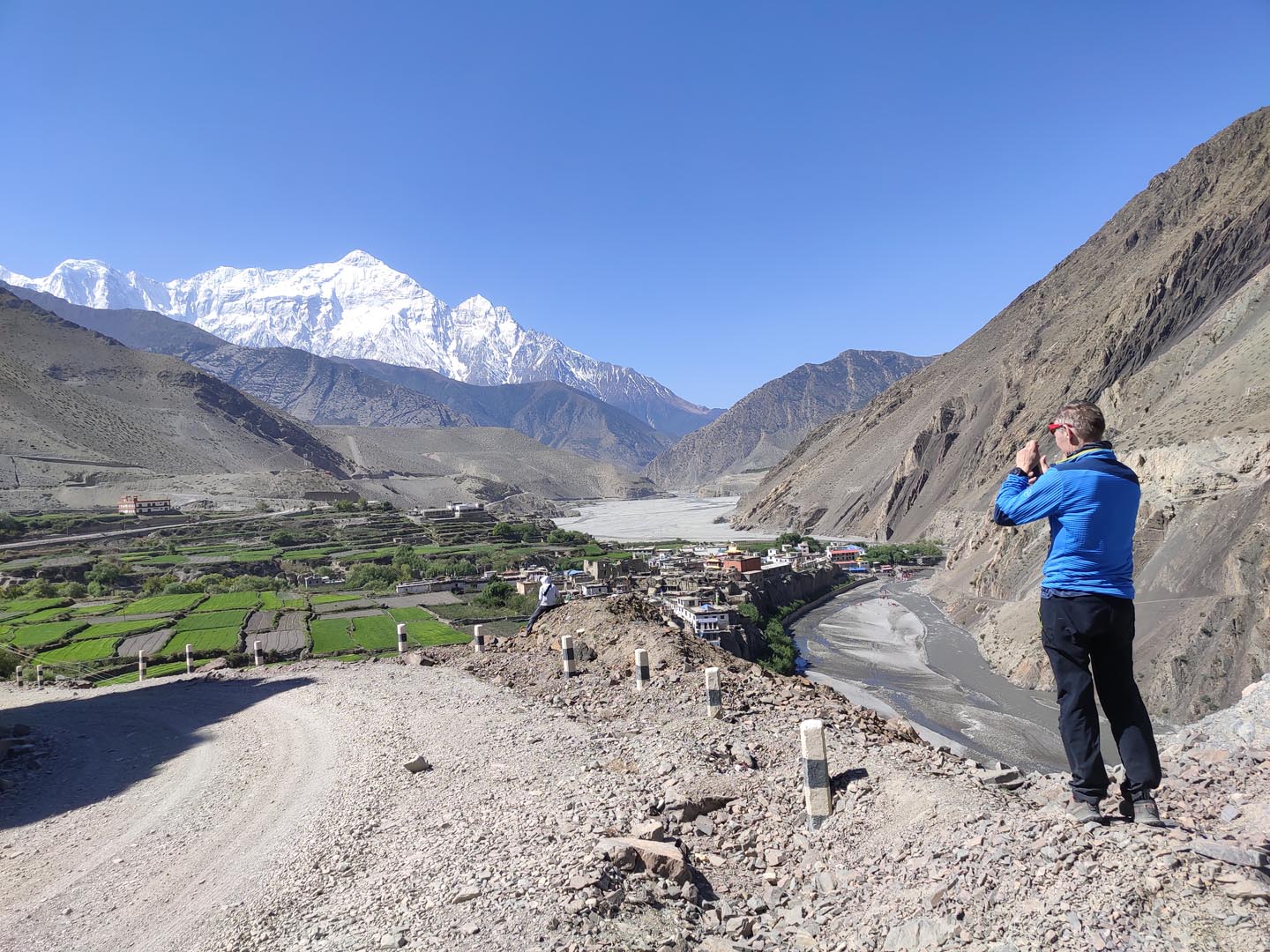
To begin the trip, you can straight up fly to Jomsom without getting into much of a hassle of trekking till there. From there, you will be entering the Trans Himalayan region which has a rather rugged and flat terrain.
There is also ample jeep access which makes the trek much easier for people with physical limitations. This trek is best suited for elderly people who also want to explore a spiritual site in the Himalayas of Nepal.
Role of Trekking Agencies in Promoting Accessibility
While accessible trekking in Nepal might seem like the norm at the first glance, it really is not. It is being achieved under the challenging circumstances due to the efforts made by the local trekking agencies as well.
Professional and reliable trekking agencies like Ace the Himalaya play a pivotal role in ensuring that your trek is accessible and more inclusive towards a wider group of people. Therefore, it is important to choose a good trekking agency.
Below are some ways in which a trekking agency can help in accessible trekking in Nepal:
- Offering customized and accommodating itineraries based on individual needs.
- Providing licensed and trained guides, especially in medical aid, and support staff for accessible travel.
- Facilitating transportation alternatives wherever available to help the trekkers through the difficult sections.
- Ensuring safety protocols and emergency readiness.
- Partnering with NGOs and accessibility advocates to improve trekking infrastructure even in the remote areas.
Conclusion
With the changing dynamics of the trekking industry, accessible trekking in Nepal is not just a distant dream but it is slowly transforming into a vibrant reality which makes the country, and its trekking trails open to all.
This has been made possible by suitable routes, improving trekking infrastructure, well maintained trails, and dedicated support services while on the trail.
Nepal is opening its mountains to a broader spectrum of travelers. Whether you’re a beginner, a senior trekker, or someone seeking a less strenuous adventure, Nepal’s accessible treks promise unforgettable memories.
Frequently Asked Questions (FAQs)
1. Is trekking in Nepal possible for people with limited mobility?
Yes, with thorough planning and preparation, extra support, and appropriate selection of the trekking trail, trekking in Nepal is possible for people with limited mobility. This becomes possible due to availability of options like vehicle assisted treks and shorter hikes.
2. Are there wheelchair friendly trekking routes in Nepal?
Well, given the dramatic landscapes and rugged terrain of Nepal that changes every few hundred meters, the possibility of a fully wheelchair friendly trekking route in Nepal seems feeble.
However, despite the challenges, some areas like Lower Mustang and certain village treks near Pokhara offer jeep accessible trails reducing walking distance significantly which provides certain level of accessibility.
3. Can elderly people do treks in Nepal safely?
Without a doubt, elderly people can trek in Nepal with utmost confidence. The trekking trails of Nepal are regarded to be among the safest ones and the people here are extremely welcoming and hospitable too.
As far as physical challenge is concerned, treks like Ghorepani Poon Hill, Dhampus, and Australian Camp are ideal for elderly trekkers due to their moderate altitude and ease of access.
4. What kind of support services are available for accessible trekkers?
The main support for any trek in Nepal is the licensed and trained guides, porters, and other support staffs. These are the backbone of any high altitude trek in Nepal.
Besides that, there are also alternative transport, accessible lodges, and emergency medical services which can make trekking much easier for trekkers.
